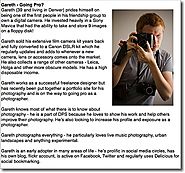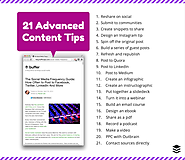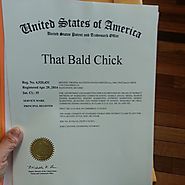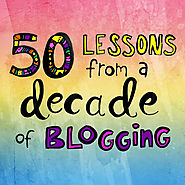-
About
- About Listly
- Community & Support
- Howto
- Chrome Extension
- Bookmarklet
- WordPress Plugin
- Listly Premium
- Privacy
- Terms
- DMCA Copyright
- © 2010-2025 Boomy Labs


 Joanne Greco
Joanne Greco
Listly by Joanne Greco
Ready to take the next step with your blog? Here is a collection of articles and guides about SEO, generating more targeted traffic and page views, writing better content, email marketing and more.

Despite the inherent "SEO value" of blogging, many blogs just aren't properly optimized for search or aren't optimized to their fullest potential. As such, these blogs aren't working as hard as they could be for an organization from an SEO standpoint. Many of the fixes and improvements you can make are really quite simple. Let's take a look at six steps every organization can take today to improve their blog's SEO.

WordPress is one of the best, if not the best content management systems when it comes to SEO. That being said, spending time on your WordPress SEO might seem like a waste of time, it most definitely is not. Optimizing your site to the best practices outlined in this article will help you improve your rankings, gain more subscribers and have a better website in general.

Is your website or blog mobile-ready? Are you wondering how to optimize it for mobile users? To learn about the opportunities available in the mobile marketing world, I interview Greg Hickman for this episode of the Social Media Marketing podcast. The Social Media Marketing podcast is a show from Social Media Examiner.

Too many blogs are plagued by hit-and-run visitors. These are people who come, read your article, and then melt back into the ether of the internet. So how can you transform one-time visitors into lifelong readers? Simple: convince them to join your email list.

One of the techniques that I’ve employed in my blogging over the last 6 months behind the scenes is to create Reader Profiles (or Personas). The technique is simply – open up a word document and begin to describe a type of reader that you’re either attempting to write for or who is already reading your blog.

If you want your marketing to really sizzle, if you want people to remember it, you need to turn your marketing messages into stories. I’ve broken down the classical elements of story below so you can begin to think like a storyteller, and make your marketing messages stick.

Ever noticed how some writers have an uncanny ability to toy with your emotions? Within the span of a few pages, you can go from shaking with excitement to bawling your eyes out to flying into a rage and throwing the book across the room. It’s the hallmark of great writing, proof of mastery of the craft, and the yardstick by which aspiring writers measure their work.

Building a raving audience online all starts with writing epic shit. Period. Hands down. End of story. (If you aren’t building a blog, substitute the word “create” for “write.” Create epic shit. Either way, the formula is the same.) Write things that make people think. Inspire people. Change lives. Create value. Blow people away with your usefulness. Only after you create epic shit should you worry about sharing your content with other people. All the promotion in the world won’t make your site popular if your content sucks.

Building up traffic on your blog requires consistency, patience and a willingness to try different strategies. Here are the four posts I've written for my blog traffic series. If you have any questions, use the comment section at the end of each post.

We need to talk about bounce rate. Now, before I begin ranting, I'd just like to put on the record that bounce rate can, in certain cases, be a useful metric that can, when viewed in the context of other metrics, give you insights on the performance of the content on your website.

When you’ve worked hard to create a perfect piece of content, you can help that content go the extra mile (and then some) by repurposing and recreating the content in a huge number of ways. Is it easy? Well, I wanted to find out. I took a favorite piece of content from our Buffer blog, “How Often Should You Be Posting to Social Media?” and I hacked together 21 variations and uses for the original story. Here’s exactly how I did it and exactly how you can do the same.

Owning a domain name and owning a trademark are not the same thing. The use of a domain name only as part of a web address does not qualify as source-indicating trademark use, and even if you register a domain name with your domain registrar, you could later be forced to surrender your domain if it infringes on someone else’s trademark rights. Merely purchasing a domain name does not give you any trademark rights. You have to use that domain name and moniker in the course of business and be able to prove it.

A collection of all the Whiteboard Friday weekly presentations by Rand Fishkin of Moz.

50 blogging lessons from Leonie Dawson. I am so very, very grateful for blogging and all it has brought me. It has its own kookiness, and its own challenges, but I wouldn’t want to do anything else on earth. I wanted to celebrate a decade in big, momentous style.
